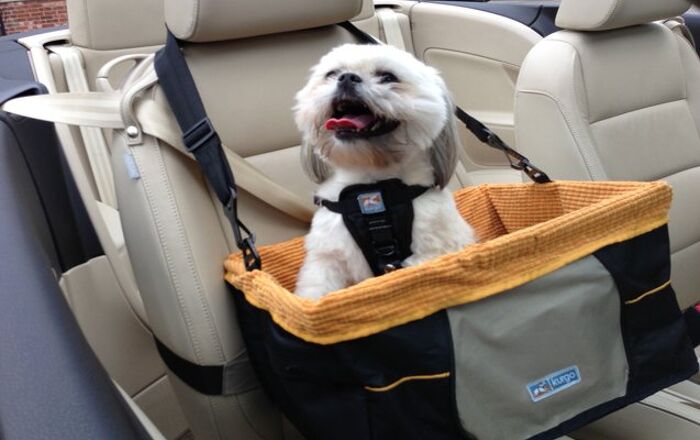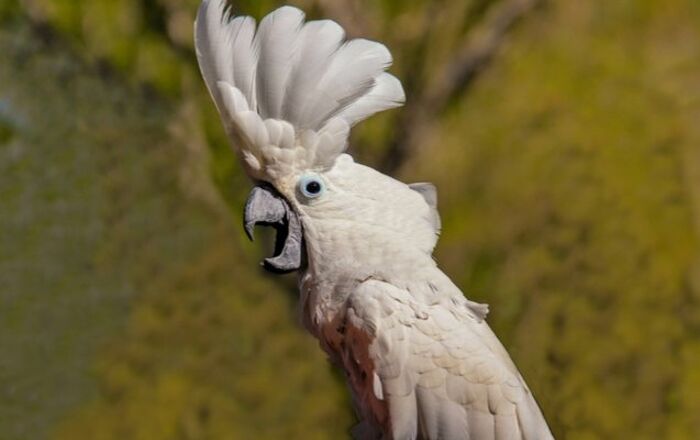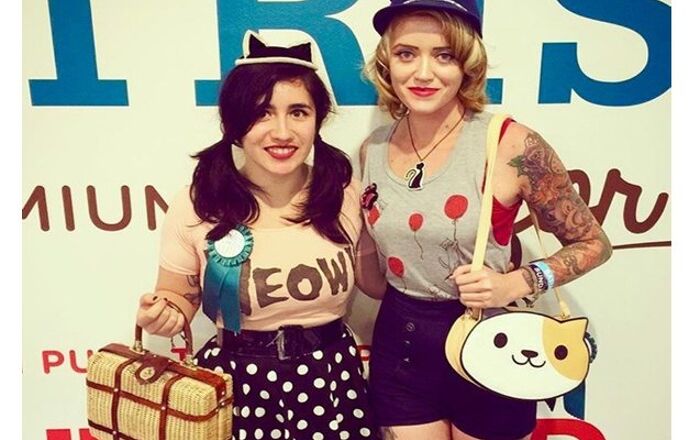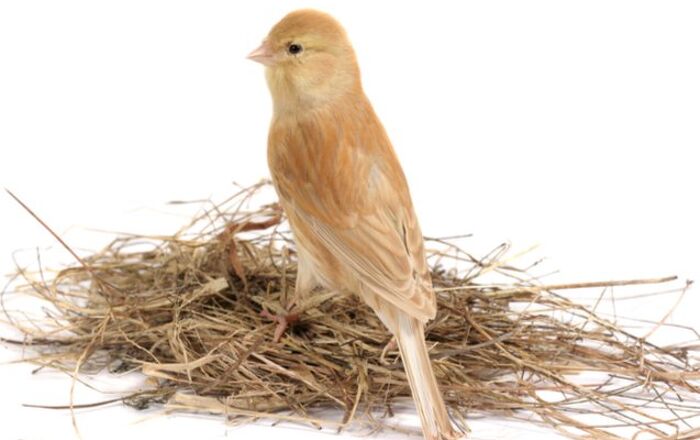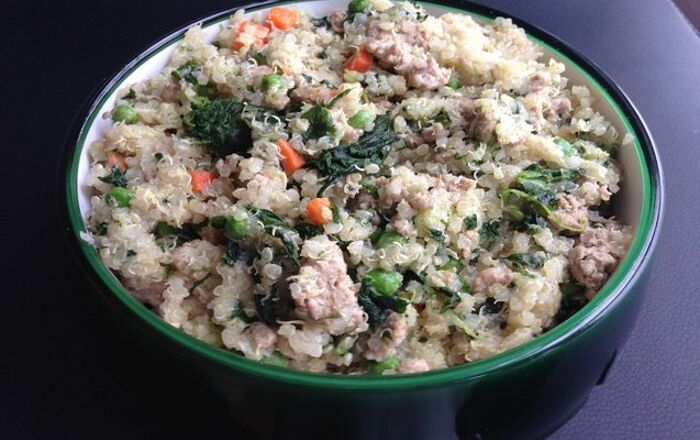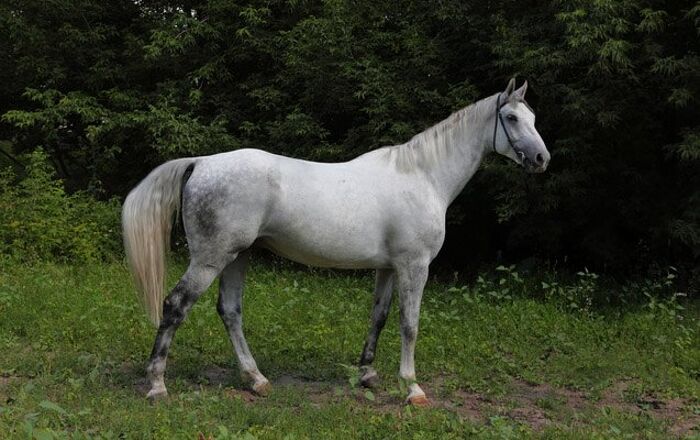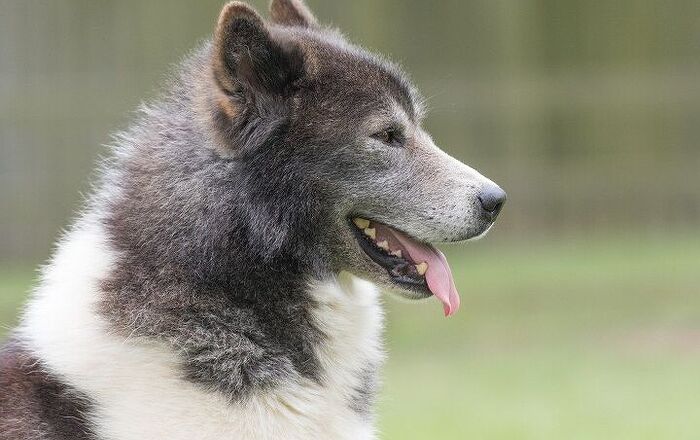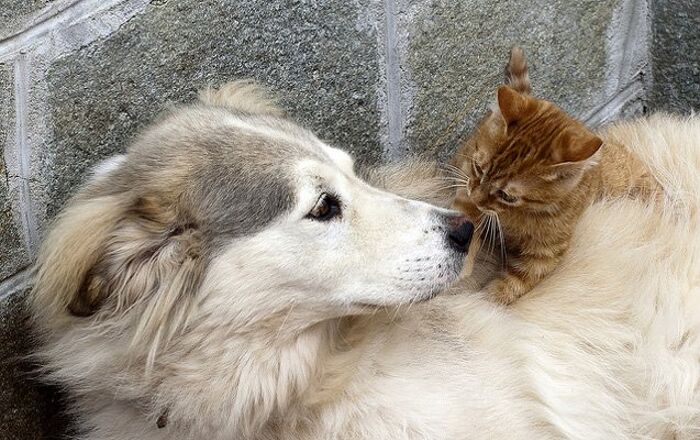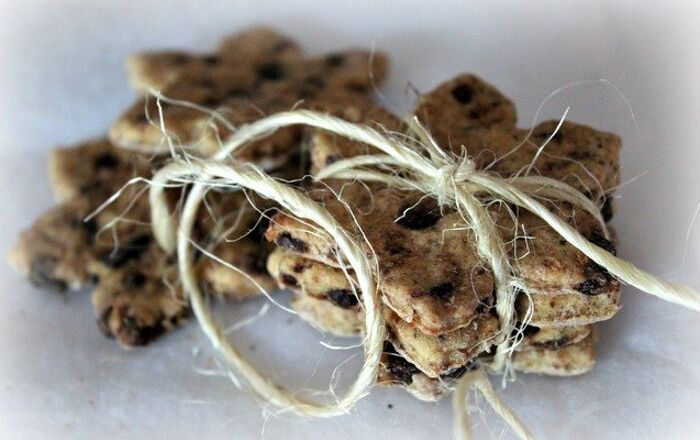
In order to live a long, healthy life, cats need to fall within a certain weight range that varies on height, age, and body size.
Helping your cat maintain a healthy weight is important, and you should keep track of your pet’s weight as she ages.
You can use a scale at home to weigh your kitty regularly. But if that doesn’t work because you can’t get your pet to sit on a scale, you can try a simple strategy: hold your pet in your arms while you stand on a scale. Write down how much you weigh while holding your cat, and then weigh yourself again without your cat in your arms. Subtract the two amounts to see how much your pet weighs.
In addition to tracking your kitty’s weight, assessing her body can also be helpful. So, even if you can’t weigh your cat on a scale in between check-ups at the vet, you can assess her body condition to determine if she is at the ideal weight or if she needs to gain or lose a few pounds.
A Cat’s Body Condition Score
Your cat’s body condition score will range from 1 through 9, with 9 indicating the cat is very overweight and 1 indicating the cat is very underweight. The ideal body condition score is in the middle, around 5.
In order to determine your feline friend’s body condition score, you don’t need any special tools. Instead, all you have to do is take a look at your cat’s body at home. This is also a simple way to keep track of your pet’s body and how it might change as she gets older, so if you notice anything that needs to be addressed by a veterinarian, you can take action right away.
Below is a basic breakdown of the different body condition scores and a brief guide on how to determine where your kitty’s body lands on the scale of 1 to 9.
Ideal
If your cat has an ideal weight, or a body condition score of 5, her body will be well proportioned.
When you gently stroke your cat, you’ll be able to notice her waist behind her ribs. You can still feel her ribs, but there will be a normal amount of fat covering them. You’ll also notice that there’s a normal, small amount of fat on her abdomen, and you may see the primordial pouch that every kitty has.
Underweight
A cat who is underweight will have a body condition score of 1 through 4.
Related:5 Reasons Why Your Cat May Be Losing Weight
If your cat has a body condition score of 1, she’s severely underweight. Her ribs will easily be visible, especially if she has short fur, and there won’t be any obvious signs of fat on the body. Her tummy will look like it’s sucked in, indicating a very obvious abdominal tuck, and her hips and spine will be pronounced.
Cats with a body condition score of 2 will have backbones and ribs that are easily seen, particularly on shorthaired felines. There also won’t be any obvious amounts of fat, there will be an abdominal tuck that’s pronounced, and there will only be a minimal amount of muscle mass.
Kitties with a score of 3 will have only a minimal amount of fat that covers the tummy and the body. Therefore, your cat’s backbones and waist will be obvious visually. As you stroke your pet, you’ll also easily feel the ribs.
In cats that score 4 on the body condition assessment, the ribs will have a minimal amount of fat covering them, so they can still be felt with your hands. These kitties will also have a noticeable waist, but will only have a slight abdominal tuck. Also, they won’t have a fat pad on the tummy, indicating they need to gain more weight.
Overweight
If your cat is overweight, she’ll have a body condition score of 6 through 9.
Once again, start by gently stroking your cat’s body and feeling for the ribs without pressing in. In an overweight cat that scores 6 on the body condition assessment, the ribs will be covered with a bit of extra fat, though you should be able to feel them. Her waist will be noticeable, though not obvious, and the same goes for her tummy fat pad. Also, there won’t be any abdominal tuck.
Related:What To Do With Your Overweight Cat
In a cat that scores a 7, you can’t feel the ribs too easily because there’s a moderate amount of fat that’s covering them. The kitty’s waist won’t easily be visible either, and there will be a rounding of her stomach with a moderate fat pad in the tummy area.
If your cat scores an 8, you won’t be able to feel her ribs because they’ll be covered with fat. You’ll also notice that her abdomen is obviously rounded and there’s a prominent fat pad on the belly. There’s also fat on her back as well.
Finally, in a cat that scores a 9, you’ll notice that the lumbar and ribs are hidden beneath heavy layers of fat. There are fat deposits on the limbs and face, and the abdomen is covered in fat and distended as well. You won’t be able to see a discernible waist either.
Diet and Exercise Can Help Your Kitty Maintain a Healthy Weight
Just like people, cats of all ages benefit from a healthy diet and a good amount of daily physical activity. So, if you are concerned about your feline friend’s weight or you want to help ensure she will remain within a healthy weight range throughout her life, you can begin by focusing on what you’re feeding her and how much exercise she gets.
Feeding your pet a high quality food and ensuring she gets to run around and play to get some exercise can help her maintain a healthy weight. And if she does need to lose some weight because she is overweight or obese, you can talk to your vet about the best ways to help your cat shed excess pounds.
For example, your vet might recommend specific foods for cats that need to lose weight, and might also give you recommendations regarding the amount of food that your cat should eat every day. You might need to change the amount that you’re feeding her or the number of times that you give your kitty a meal. Or, you might need to stop free feeding (leaving dry food out at all times for your cat to eat). Plus, your vet can provide you with valuable insight into how to entice your kitty to play if she tends to prefer being inactive.
Ultimately, it’s all about working with your cat and figuring out her likes and dislikes. This can help you find the right food and it can help you come up with a playtime routine that will be effective.
Note: If your kitty has to lose weight, it’s best to work with a veterinarian at every step. Your vet can guide you when it comes to your pet’s target weight, as well as how long it will take to hit that target weight. It isn’t a good idea to cause your cat to lose weight too quickly or in an extreme way. Instead, it’s wise to take a slow and steady approach to weight loss that helps your pet become healthier.
A Healthy Weight Is Important
If you aren’t sure about what a healthy weight would look like for your unique kitty, based on things like her age, breed, and size, you can consult a veterinarian for advice on this important topic.
Talk to your vet to find out what your cat’s ideal weight range is, as well as what the best foods are for your furry friend and how much playtime she should enjoy each day to help her get the exercise she needs. Then, make it a point to regularly check her body condition to track her progress.

